Speaking with John Kruse at Worldwide Auctioneers
We had the opportunity to speak with John Kruse of Worldwide Auctioneers about their upcoming Enthusiast Auction earlier this week. We discussed what sets Worldwide Auctioneers apart from the competition and what makes the Enthusiast Auction so much fun.
The first thing that really sets Worldwide apart from many other auction companies is that the Enthusiast Auction kicks off with the Enthusiast Collector Car Tour, an opportunity to spend a few days behind the wheel of your favorite classic car with a group of likeminded collectors.
The Enthusiast Tour and Major Collections
More significantly the tour participants are welcomed into exclusive collections, this year focusing on the area surrounding Auburn. They will get to meet the collectors who put so much time and passion into building their dream garages as well as what they did to build those collections. It’s a chance to meet the lesser-known but still significant figures in the classic car world and a reminder that the whole point of the Enthusiast Auction is to focus on collector cars that are ready to be driven home, not just loaded on a truck and parked.
That’s the philosophy of Worldwide Auctioneers: If you own a car, you should drive it. And that’s the quality of car that will be on offer at the Enthusiast Auction. Three significant collections will be offered in Auburn, the Zimmerman Automotive Driving Museum Collection – offered without reserve – The Passport Collection – mostly offered with no reserve – and the Great Outdoors Collection which will be offered entirely without reserve.
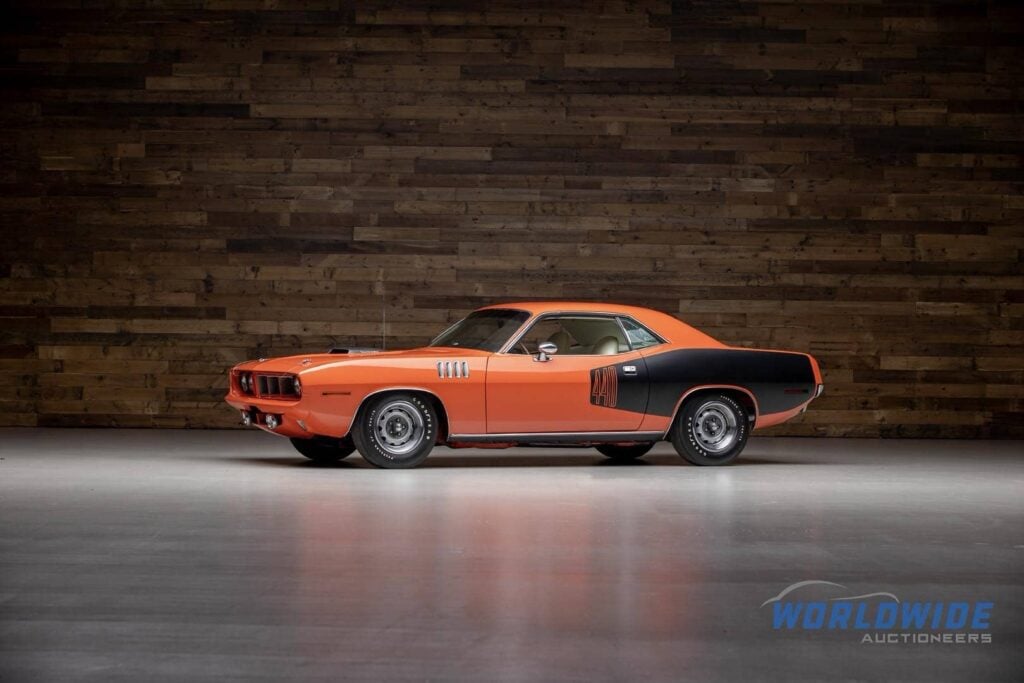
The 1971 Plymouth ‘Cuda 440-6 was a powerful muscle car equipped with Chrysler’s robust 440 cubic inch V8 engine, complemented by three two-barrel Holley carburetors. This setup, known as the “Six-Pack” or “Six Barrel,” was rated at 385 horsepower, although many believe this figure was conservative.
Its bold styling, including the optional Shaker hood scoop that responded to the engine’s vibrations, cemented its iconic status during the period. The 440-6 ‘Cuda provided rapid acceleration and an intense driving experience, making it one of the most sought-after and collectible muscle cars from the early 1970s. Despite its brief production run, influenced by increasing insurance costs and stricter emissions standards, it remains highly regarded among enthusiasts.
As John said, “to get an original numbers-matching four-speed of any ’70 – ’71 Mopar is pretty awesome.” And this is certainly a rare model, one of just 50 built for 1971 and one of just 7 with factory-equipped V6X stripes. This car simply has, “the right colors, the right options, and most importantly it’s just correct.”
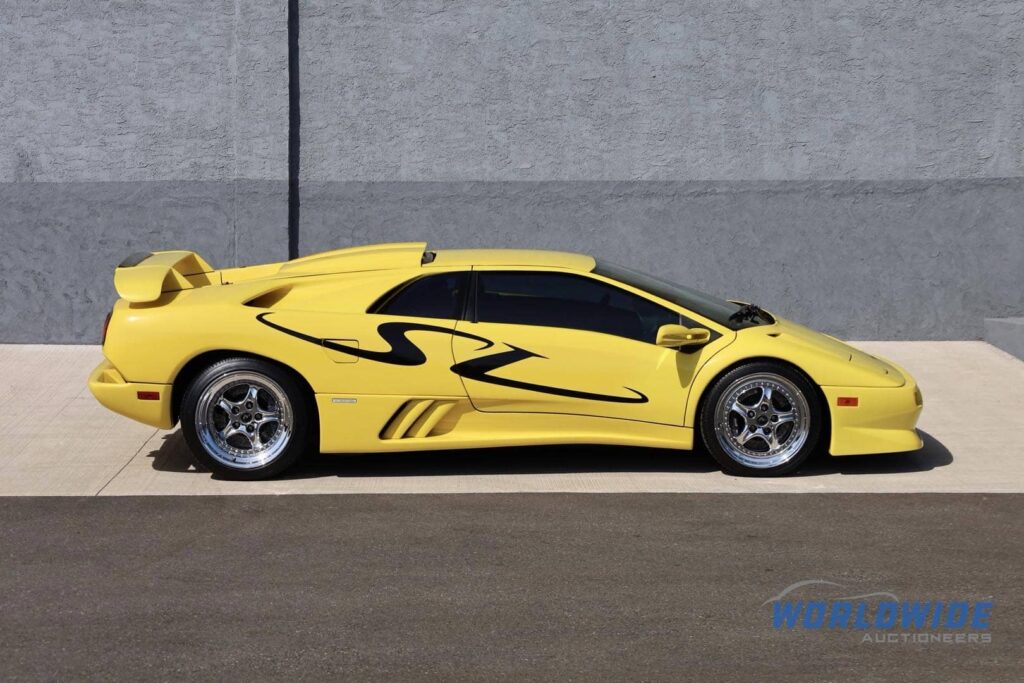
The 1998 Lamborghini Diablo SV Monterey Edition was a rare, US-market exclusive variant, with only 20 units produced as a nod to the Monterey Car Week in California. It uniquely combined the aggressive styling of the Diablo SV with design cues from earlier special editions like the SE30 and VT Roadster, most notably featuring the trio of air intakes ahead of the rear wheels.
Distinguishing itself further, the Monterey Edition retained the Diablo’s iconic pop-up headlights for its final year, even as the standard model transitioned to fixed units. Under the hood, a slightly more potent 5.7L V12 engine produced around 530 horsepower, making it the most powerful production Diablo with pop-up headlights, all sent to the rear wheels through a five-speed manual transmission.
This is more than just one of the 20 Monterey Edition models built – it’s the first, VIN 12000. This could prove to be a very significant car on the auction block. While the Diablo has been making some big moves in the market lately and there have been “quite a few SV comparables, there hasn’t been been a Monterey Edition that I’m aware of for about three years.” More importantly John Kruse noted, “the market has moved quite a bit in that window,” and, “the first of anything usually has a bit of a premium.”
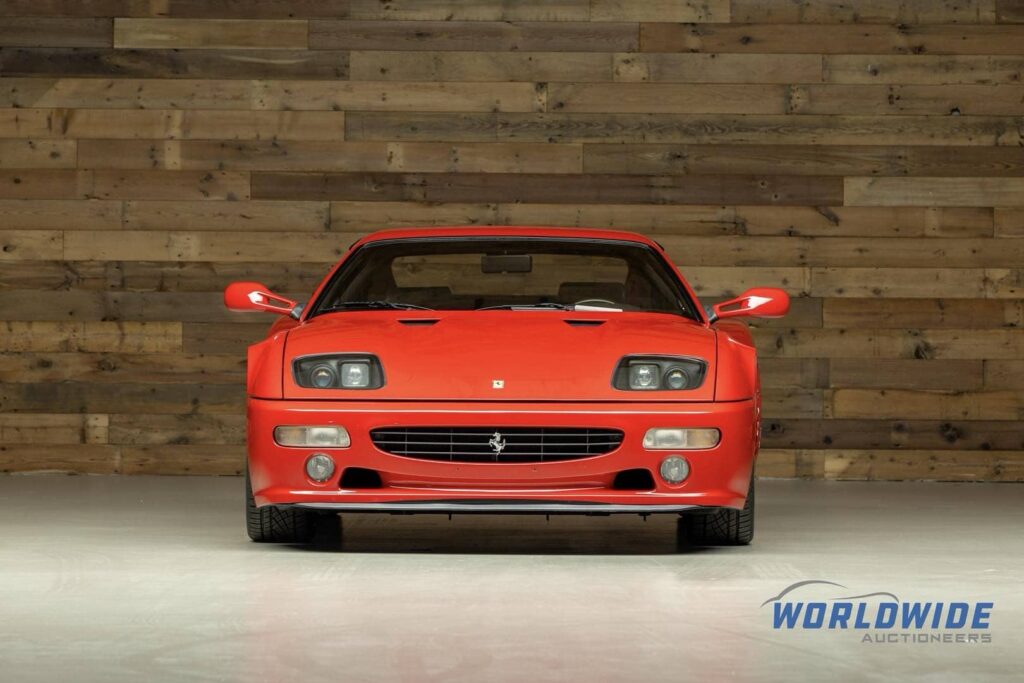
The 1995 Ferrari F512 M is often viewed as the ultimate and most polished version of the renowned Testarossa series. It showcased a bolder front design with fixed headlights beneath clear covers, an updated rear section featuring round taillights, and enhanced interior comfort. The car was powered by a 4.9L flat-12 engine delivering 440 horsepower and 369 lb-ft of torque, allowing it to accelerate from 0 to 60 mph in roughly 4.7 seconds and reach a top speed near 196 mph.
The “M” designation, meaning “Modificata,” indicated substantial improvements to the engine control system, suspension, and brakes. These enhancements aimed to refine the driving experience and make it more approachable than earlier models. As the final traditional flat-12 Ferrari incorporating this style, the F512 M continues to be highly coveted among collectors and enthusiasts alike.
This F512 M has seen a respectable number of miles in its life. As John Kruse mentioned, “it’s not a lot of miles but sometimes you end up buying the sub-10,000 mile cars and you’re afraid to drive,” and let that odometer flip over to the next increment. With this car, “you’ve got 5,000 miles,” before it hits 30,000 so there’s plenty of time to enjoy the car without worrying about that next big number on the odometer.
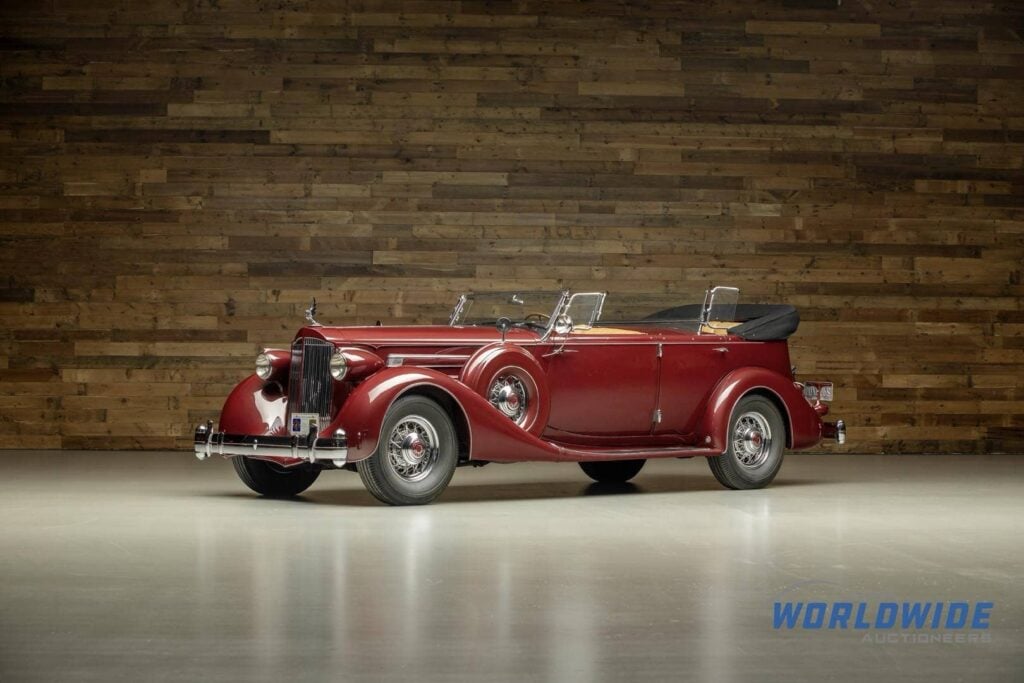
The 1935 Packard Twelve Dual Cowl Sport Phaeton was an exceptionally stylish and prestigious open-top car, epitomizing the height of pre-war luxury and craftsmanship from Packard. It featured a smooth and powerful V12 engine, generally with a displacement of around 473 cubic inches and producing approximately 175 horsepower, delivering effortless performance and a refined driving experience.
Its most notable feature was the dual cowl design, offering separate windshields that provided privacy for both front and rear passengers, thereby increasing its exclusivity and attraction to affluent buyers. With elegant lines, luxurious features, and limited production numbers, the 1935 Packard Twelve Dual Cowl Sport Phaeton remains a highly sought-after and iconic classic, capturing the essence of opulence and grandeur from that period.
John, a long-time proponent of classic American cars noted, “I go on a lot of classic car tours and you see a lot of ’41 Cadillacs and ’39 Packards.” And while those are fun to drive, it can be tough to show up with a car that really turns some heads, “but with this car you can do that without getting above seven figures.”
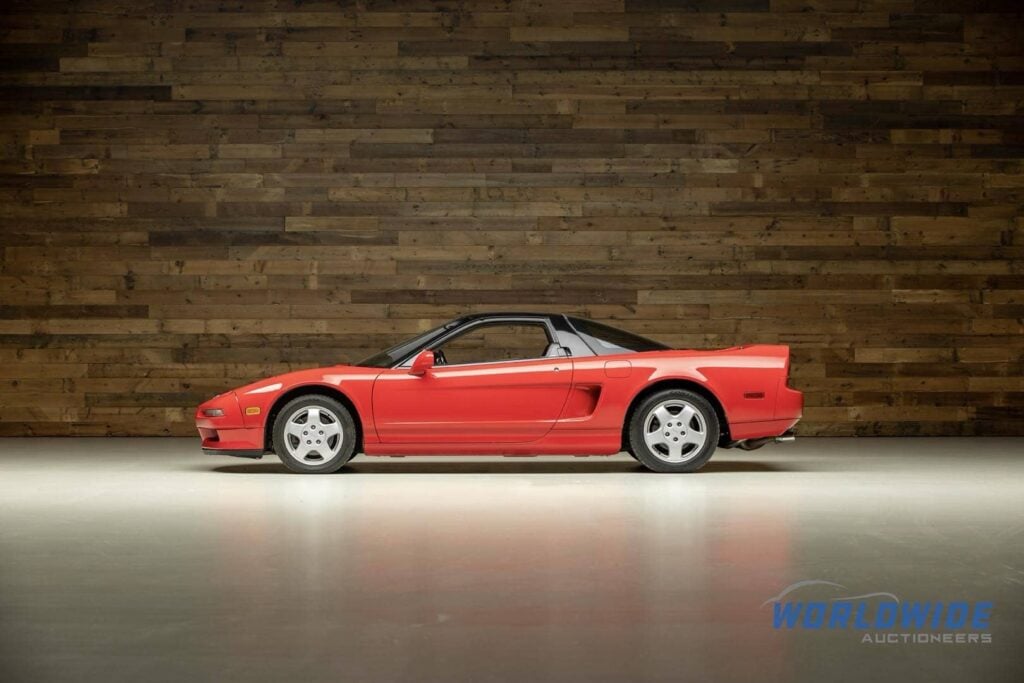
The 1991 Acura NSX Coupe was a groundbreaking mid-engine sports car that offered a compelling alternative to the traditional European supercars. It combined unique styling, cutting-edge technology, and unexpected practicality for everyday use. Under its hood sat a 3.0L V6 engine equipped with VTEC (Variable Valve Timing and Lift Electronic Control), generating 270 horsepower and 210 lb-ft of torque. This setup provided thrilling performance and a signature high-revving nature.
Its construction featured a lightweight aluminum monocoque chassis paired with an advanced four-wheel double-wishbone suspension system developed with insights from Formula 1 icon Ayrton Senna. Together, these elements ensured remarkable handling and a well-balanced driving experience. The NSX’s inviting interior, dependable Honda engineering, and eye-catching design made it a pioneering vehicle in the supercar category, securing its status as a much-desired modern classic today.
An early NSX may be the perfect car to start a collection for those new to the hobby, an excellent foundational car. It may not be the fastest thing on the road, but as John said, “you can just hop in and cruise around and get a lot of head turns,” in this car. It’s an attainable entry into, “a really iconic sports car,” that can is, simply put, a lot of fun.
